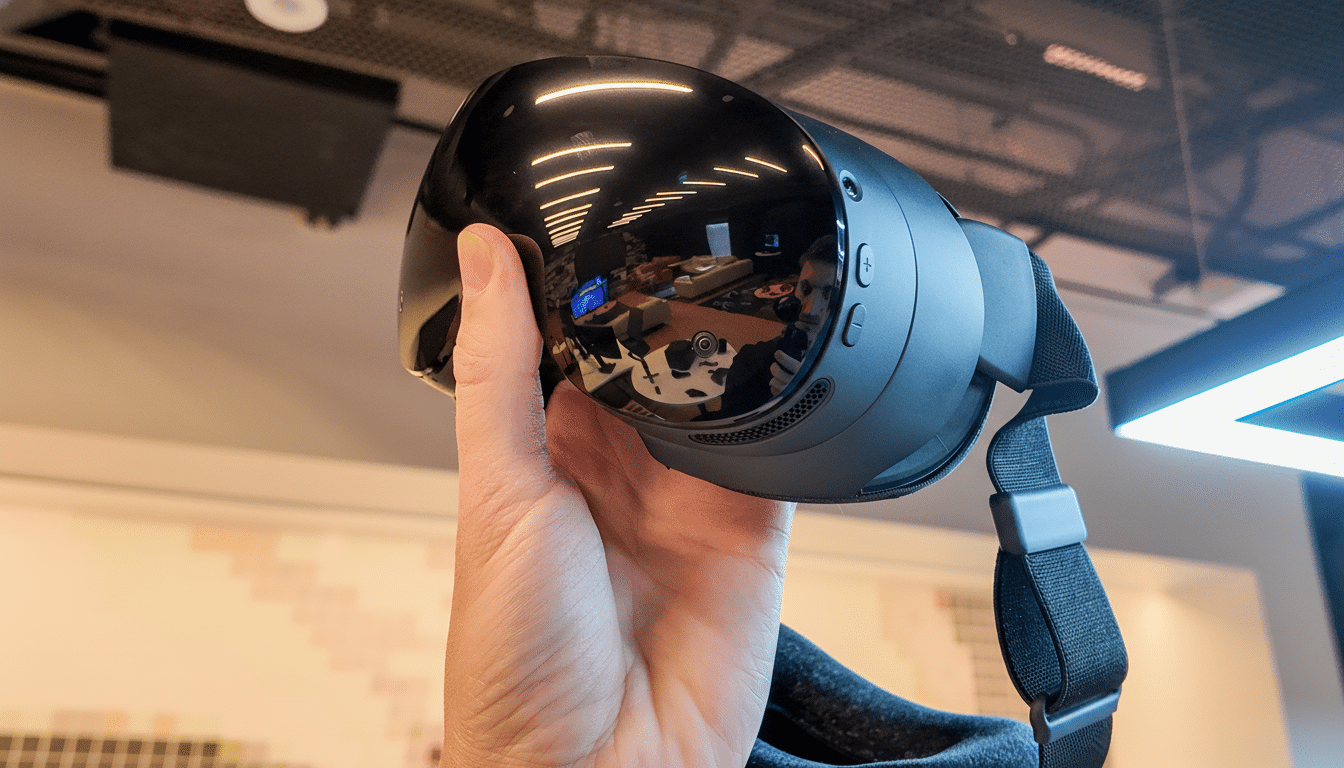Valve’s next VR headset, the Steam Frame, will drop support for its legacy Lighthouse trackers. This will mark a definitive end to the outside-in tracking system that powered the HTC Vive, Valve Index, and a generation of enthusiast full-body setups. Lawrence Yang, a senior UX designer at Valve, recently confirmed the news, and early briefings suggest the Steam Frame may use inside-out tracking via onboard cameras and infrared illumination. Streamlined setup, faster onboarding, and more mainstream draw have been Meta’s priorities for the Quest line of VR headsets, boasting the industry’s most advanced camera-based tracking system.
How Steam Frame changes Valve’s tracking approach
Steam Frame replaces external base stations with an array of four monochrome cameras and infrared illuminators. This will not send laser sweeps to identify your room. The headset will instead use onboard vision computing to localize itself, a technique that has quickly advanced in consumer VR. There will be no base stations to attach and no tracking or calibration procedure: you will put your headset on and play. Note that first- and second-generation Lighthouse peripherals will not connect to Steam Frame. This is a significant move for Valve, which played a pivotal role in developing the Lighthouse standard and shipping the highest-precision outside-in system for room-scale VR.

Why Lighthouse tracking is being left behind by Valve
Outside-in tracking is a gold standard for absolute precision and occlusion resilience, but it introduces cost, complexity, and friction. A pair of Base Station 2.0 units still cost about as much as a budget headset accessory, and wall-mounting, power routing, and room calibration present big barriers for first-time buyers.
In contrast, inside-out tracking is aligned with how most people already use VR: short, casual sessions that require instant readiness. Trends in Steam’s Hardware Survey have consistently found Meta’s inside-out headsets enjoying a strong majority share, with some analyses pegging combined Meta usage at over 60% on the platform. For Valve, building for how users actually work probably also means that it needs to build a platform for the main behavior, and not the niche best case.

Impact on VR ecosystems and current Lighthouse users
Online, communities dependent on Lighthouse are at a precipice. Bigscreen’s ultra-light Beyond, and many Pimax headsets, are starved for Base Station tracking. Social VR app enthusiasts—particularly users with full-body avatars using three to seven Vive Trackers—have historically chosen Lighthouse for accuracy and resistance to drift.
Valve itself has said it is still open to partners pursuing SteamVR Tracking with Lighthouse as well, and that the actual SteamVR platform is not going anywhere. In practice, this means the investments a Lighthouse owner makes today should still hold value with third-party headsets and peripherals that are compatible, but it also means Steam Frame won’t become the drop-in replacement that most Lighthouse owners once hoped for.
Trade-offs and performance considerations for VR tracking
- Outside-in systems work well when controllers or trackers are positioned behind the body or close to the face, which can block the view of cameras on inside-out headsets. This particular distance has been shortened since then: higher-resolution sensors, finer IR illumination, better SLAM algorithms, and predictive modeling have all worked together to slash tracking dropouts in almost every consumer context. Lighthouse, on the other hand, continues to shine in critical usage cases where sub-millimeter accuracy and timely updates are necessary. This includes warehouse-scale deployments, multi-user arcades, motion capture, and extremely dynamic controller paths, among similar use cases. The design of Steam Frame makes it evident that Valve has prioritized comfort and widespread compatibility rather than specialized edge cases.
- Valve is also promoting wireless game streaming for Steam Frame. In real-world applications, latency, compression, and stability will determine whether or not it is actually advantageous, but inside-out monitoring combined with stable wireless could ultimately allow PC VR to remain a living-room experience instead of a cabled workstation. From a developer perspective, the message is clear: develop for inside-out first and outside-in as an additional feature for Lighthouse ecosystem users. For the customer, the message is even more clear: Steam Frame will be easier to unlock, quicker to load, and easier to maintain, even if it means going all-in would lose you on Valve’s own hardware.
The bottom line for Lighthouse holders is practical. Your base stations, Index controllers, and Vive Trackers are all still power tools with compatible headsets, but Steam Frame won’t support them. Valve’s wager is that fewer boxes to mount and fewer steps required to get up and running will win more converts than it disappoints — and market trends suggest they’re not wrong.

